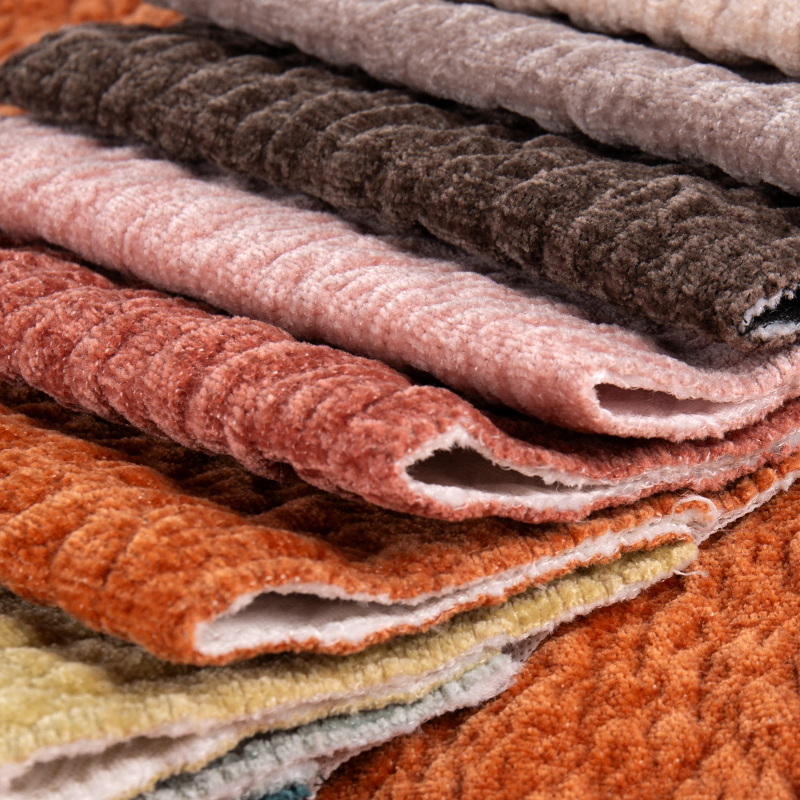Feb 21, 2025
The performance characteristics of recycled fabrics —such as moisture-wicking, breathability, and thermal insulation—are critical factors when evaluating their suitability for various applications, particularly in activewear, outdoor gear, and everyday clothing. While recycled fabrics are increasingly being used as sustainable alternatives to traditional textiles, their performance can vary depending on the type of recycled fibers, manufacturing processes, and fabric blends. Below is a detailed comparison of these properties:
1. Moisture-Wicking
Recycled Fabrics :
Performance : Recycled polyester (rPET) and nylon derived from plastic bottles or industrial waste often exhibit similar moisture-wicking properties to their virgin counterparts. These synthetic fibers are hydrophobic, meaning they repel water and allow moisture to evaporate quickly.
Advantages : The molecular structure of recycled polyester remains largely unchanged during recycling, preserving its ability to wick moisture effectively.
Limitations : If recycled fabrics are blended with natural fibers like cotton, their moisture-wicking capabilities may be reduced, as cotton absorbs and retains moisture rather than wicking it away.
Traditional Textiles :
Virgin polyester and nylon are engineered specifically for moisture management, making them highly effective at wicking sweat and keeping the wearer dry.
Natural fibers like cotton and wool have lower moisture-wicking capabilities but excel in moisture absorption, which can feel less comfortable during high-intensity activities.
Comparison : Recycled synthetic fabrics perform comparably to traditional synthetic textiles in terms of moisture-wicking. However, the blending of recycled fibers with natural fibers may reduce this property unless carefully engineered.
2. Breathability
Recycled Fabrics :
Performance : The breathability of recycled fabrics depends on the fiber type and fabric construction. Recycled polyester and nylon typically maintain good breathability due to their porous structure, allowing air to circulate through the fabric.
Advantages : Advanced weaving or knitting techniques can enhance the breathability of recycled fabrics, making them suitable for activewear and warm-weather clothing.
Limitations : Recycled fabrics made from blended fibers or tightly woven constructions may have reduced breathability compared to lightweight, open-weave traditional textiles.
Traditional Textiles :
Virgin synthetic fabrics are engineered for optimal breathability, especially in performance wear.
Natural fibers like cotton and linen are inherently breathable due to their ability to absorb moisture and allow airflow, though they may retain moisture longer than synthetics.
Comparison : Recycled synthetic fabrics generally match the breathability of traditional synthetics. However, recycled blends may require additional engineering to achieve the same level of comfort as pure natural fibers.

3. Thermal Insulation
Recycled Fabrics :
Performance : Recycled fabrics can provide excellent thermal insulation, particularly when made from materials like recycled wool or polyester fleece. These fabrics trap air within their fibers, creating an insulating layer that retains body heat.
Advantages : Recycled wool retains the natural insulating properties of virgin wool, including moisture regulation and warmth even when wet. Similarly, recycled polyester fleece is lightweight, soft, and highly insulating.
Limitations : The insulation properties of recycled fabrics may degrade slightly if the fibers are shorter or weaker due to the recycling process, though advancements in technology are minimizing this issue.
Traditional Textiles :
Virgin wool and down feathers are renowned for their superior thermal insulation. Wool naturally regulates temperature, while down provides exceptional warmth-to-weight ratios.
Synthetic fibers like virgin polyester fleece are also widely used for insulation in outdoor gear.
Comparison : Recycled wool and polyester fleece perform similarly to their virgin counterparts in terms of thermal insulation. However, the quality of insulation in recycled fabrics may depend on the recycling process and fiber integrity.
4. Key Factors Influencing Performance
Several factors influence how recycled fabrics compare to traditional textiles in terms of moisture-wicking, breathability, and thermal insulation:
A. Fiber Type
Recycled synthetic fibers (e.g., polyester, nylon) generally retain the performance characteristics of their virgin counterparts.
Recycled natural fibers (e.g., cotton, wool) may experience slight degradation in fiber length or strength, potentially affecting performance.
B. Fabric Blends
Blending recycled fibers with other materials (e.g., spandex for stretch or cotton for softness) can alter performance. For example:
Adding spandex improves elasticity but may reduce breathability.
Blending with cotton enhances comfort but reduces moisture-wicking.
C. Manufacturing Processes
Advanced recycling technologies, such as chemical recycling, can produce fibers with properties nearly identical to virgin materials.
Mechanical recycling may result in shorter fibers, which can affect fabric performance.
D. Fabric Construction
Weaving, knitting, and finishing techniques play a significant role in determining breathability, moisture-wicking, and insulation. For example:
Tight weaves improve durability but may reduce breathability.
Brushed or fleeced surfaces enhance thermal insulation.
5. Applications & Use Cases
Activewear : Recycled polyester and nylon are widely used in activewear due to their excellent moisture-wicking and breathability, comparable to traditional synthetics.
Outdoor Gear : Recycled polyester fleece and wool are popular for thermal insulation in jackets, base layers, and blankets.
Everyday Clothing : Recycled cotton and wool blends are used in casual wear, offering comfort and sustainability without compromising too much on performance.